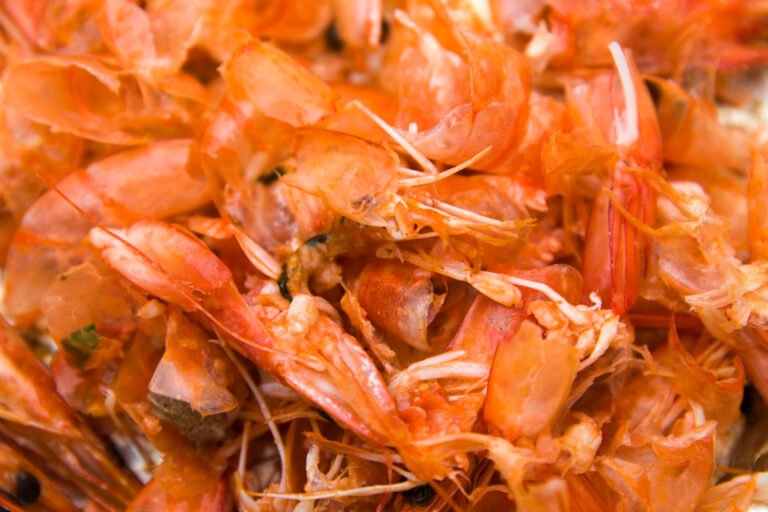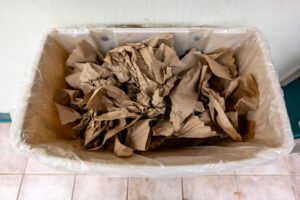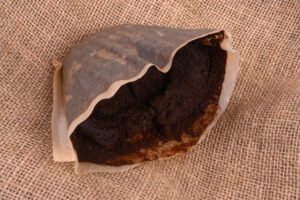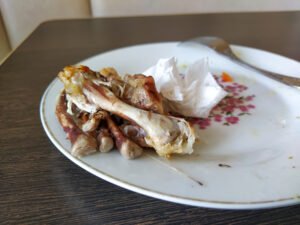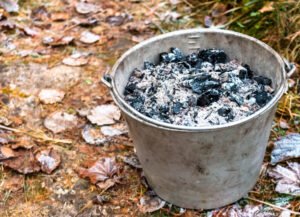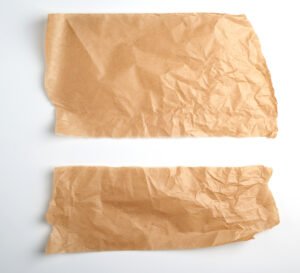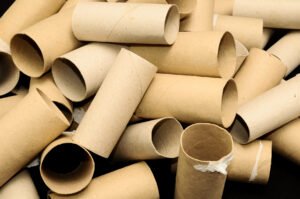Luscious and delectable – that’s how shrimps are! And these crustaceans are, indubitably, nutritious. But what about the shrimp shells after enjoying that seafood entrée? Since they are so healthy, can you use them for plants? Can you compost shrimp shells? Let’s find out!
Key Takeaways
- You can compost shrimp shells as they contain Nitrogen, Chitin, and Calcium Carbonate, all of which are advantageous for the soil.
- Shrimp shells can be composted via Hot Composting, Cold Composting, Trench Method, and Bokashi Composting.
- Shrimp shells can be composted either raw or cooked. Always Remove the fat and break the shells down before composting them.
- The calcium carbonate present in shells aids cell development in plants. For more benefits, tips and ways of composting shrimp shells, read along!
Components of Shrimp Shells
- Chitin: A type of carbohydrate that is the principal constituent of shrimp shells. It produces food for the soil and is used as a fertilizer.
- Nitrogen: High Nitrogen content in shrimp shells make them a green compost material.
- Calcium Carbonate: Shrimp shells contain a substantial amount of calcium carbonate, which helps in the cell development of plants.
So, now you know that shrimp shells are the epitome of nutritious feed for plants. It’s time to learn how to compost them!
How to Compost Shrimp Shells?
You can compost cooked or raw shrimp shells by hot composting, cold composting, Bokashi method, or trench composting. You can choose any way as per your requirement.
But before composting, there are a few pre-composting steps you should follow to ease the process.
- Collect the Shells: Collect the shrimp shells in a container with a lid. You can add shrimp heads and tails too.
- Boil: Boil the shells in water for about 20-30 minutes. This will clean the shells and reduce the odor keeping the lurking pests away from the compost. Use a fork to scrape off the meat.
- Dry the Shrimp Shells: Bake the shells at 350℉ for 5-10 minutes and turn them once in between to ensure they are completely dried. Or, use a dehydrator.
- Crush the Shells: Break down the brittle shells using a rolling pin, a mortar & pestle, a grinder, or just your hands.
- Store: Store the crushed shrimp shells in a jar with a tight lid at room temperature. This powder can last up to a year.
You have your shrimp shells ready just in the suitable form. Let’s take a look at the methods of composting them.
Hot Composting
As the name suggests, this method uses a high temperature to decompose the material in the presence of air and water. Hot composting needs regular monitoring.
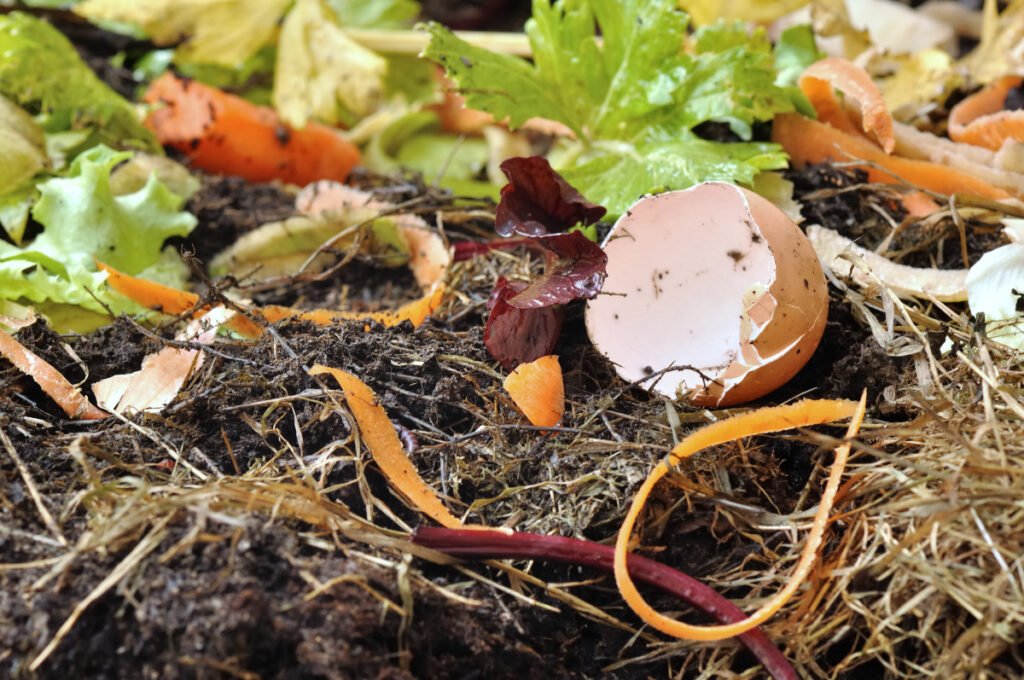
Things You Will Need:
- Compost Bucket or Compost Bin
- Green Materials (Crushed Shrimp shells, grass clippings, kitchen scraps, seaweed, etc.)
- Brown Materials (yard waste, pine needles, shredded paper, etc.)
- Shovel or Pitchfork
Step 1: Add Brown Materials
Apply a layer of brown materials at the base of the composting bin. These Carbon-rich materials are a great food source for soil-dwelling organisms.
Step 2: Add Green Materials
Add a firm layer of green materials above it. These greens are Nitrogen-rich materials that are accountable for heating up the compost.
Step 3: Maintain the Moisture
Water the pile regularly, just enough to moisten it and not make it soggy wet.
Step 4: Repeat
Repeat the application of green and brown layers alternatively.
Step 5: Add Shrimp Shells
Place the shrimp shells in the middle of the compost bucket or pile where it is the hottest.
Step 6: Cover the Shells with Compost
Cover the layer of shrimp shells with a 10-inch layer of compost. This will prevent the odor from coming out, which might attract rodents and other pests.
Step 7: Maintain the Bin
Make sure to turn the pile routinely to keep the bacteria active. Occasionally, measure the temperature and maintain it between 120-160℉.
If the pile is too hot, you can turn it to circulate air; if it is too cold, you can add more nitrogen material.
And following these steps will give you your shrimp shell compost in just a few weeks or months. The process works faster and can be used for large-scale production.
Cold Composting
If you are unable to maintain your compost pile, cold composting is a good alternative. The materials break down at their own pace in this method, making it a slow process.
Things You Will Need:
- Compost Bucket
- Green Materials (Shrimp Shells)
- Brown Materials
Step 1: Apply Layers of Greens and Browns
Layer the composting bin with Nitrogen-rich green and Carbon-rich brown materials.
Step 2: Add Shrimp Shells
Add shrimp shells in powdered or crushed form or as a whole (but whole shells will longer to decay)
Step 3: Cover with Composting Ingredients
Cover this pile with compost material, grass clipping, or a layer of soil to seal the odor and avoid pests. Also, the temperature of the pile should be around 80-120℉.
That’s it! Now, all you have to do is wait! This is a more time-consuming process and will take a year or two to give you your compost.
You can use an elevated compost bucket or place it above the ground level to avoid rodents loitering around.
Trench Composting
Don’t have a composting bin? Don’t worry! All you need is a trench in your backyard to compost shrimp shells.

Things You Will Need:
- Shovel
- Green Materials (Shrimp Shells)
- Brown Material
Step 1: Dig a deep (10-15 inches) hole or a trench in the corner of your garden.
Step 2: Directly apply shrimp shells along with green and brown materials near the roots.
Though easy to maintain, shrimp shells may take anywhere between 2 months to a year to decompose via this method.
Bokashi Composting
This is an effective way of composting shells. Bokashi composting is an anaerobic composting method that uses a special bokashi bran to ferment the waste.
Things You’ll Need:
- Bokashi Bucket
- Bokashi Bran
- Food Scraps & Shrimp Shells
- Molasses
Step 1: Add Bokashi Bran to the Bucket
Cover the drain plate at the base of the bucket with a firm layer of Bokashi bran.
Step 2: Add Food Scraps
Spread a layer of food scraps, including crushed shrimp shells.
Step 3: Add Another Layer of the Bran
Apply a layer of Bokashi bran to the waste. Use a generous amount of bran if there’s a good amount of food waste.
Step 4: Add Molasses
Add molasses or brown sugar to boost the production of microorganisms.
Step 5: Push Down the Plate
Push down the waste in the bucket with the help of a plate to get the extra air out.
Step 6: Cover the Bucket
Cover the bucket with a lid and keep it undisturbed.
The pre-compost will be ready in a couple of weeks. But since this pre-compost might be acidic, you can add it to the compost bin for further decomposition or bury it in the soil away from the plant roots.
This is the least time-consuming process to compost the food scraps.
Avoid opening the Bokashi bucket frequently, as the process is anaerobic.
Benefits of Composting Shrimp Shells
If you’re a seafood lover, you must compost the waste shrimp shells. You can also compost crab shells, mussel shells, clam shells, oyster shells, prawn shells, and almost all types of seafood shells. Even fish!
And not just that, you can also compost nut shells. But shrimp peelings have an advantage over them as they are comparatively thinner, which eases the composting process.

Here are a few more benefits of composting shrimp shells:
- Recycle: Composting shrimp shells is a great way of recycling kitchen scraps. Throwing shrimp shells in the garbage will end up in a heavier landfill. So, it is better to recycle them.
- Protection from Nematodes: Shrimp shells make excellent organic compost for receding the population of parasitic nematodes. The chitin present in the crustacean shells helps to ward off the nematodes.
- Provides Nitrogen: This chitin in compost breaks down and supplements the soil with Nitrogen which helps microorganisms grow and multiply. It is better than Nitrogen-infused fertilizers.
- Provides Calcium Carbonate: Shrimp shell compost has Calcium Carbonate, which helps the development of plant cells and improves overall plant health. Citrus, lettuce, apple, etc., benefit the most from this compost.
- Raises Soil pH: Adding shrimp shell compost to the soil aids in maintaining the pH of acidic soil. The compost makes the soil alkaline.
- Improves Soil Quality: Shrimp shell compost improves the overall quality of the soil, by increasing the organic matter and providing it with all the essential nutrients, like Magnesium, Manganese, Iron, Boron, etc.
- Prevents Diseases: Shrimp shells produce chitin-digesting bacteria, particularly preventing fungal diseases in potatoes.
Cons of Composting Shrimp Shells
Shrimp shell compost is a good fertilizer and soil amendment. But with all the advantages, composting these shells has a few disadvantages too.
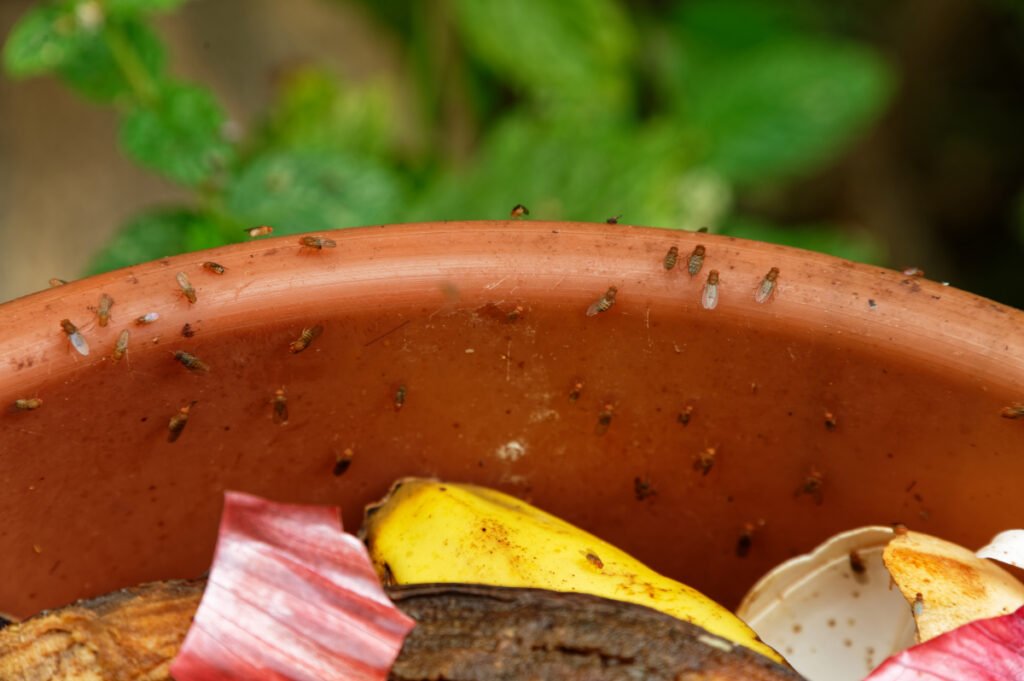
- Attracts Pests: Rodents, foxes, dogs, cats, etc., are attracted to the meat odor and will dig in the compost if shrimp shells are too shallow.
- Time-consuming: Composting shrimp shells involves boiling, drying, crushing, etc., all of which take a lot of time and effort.
- Foul odor: Bad compost can be putrid if not processed appropriately.
Precautions While Composting Shrimp Shells
Shrimp shells are compostable but are likely to attract pests and rot.
So, here are some measures to take to reap the maximum benefits of composting shrimp shells:
- Avoid shrimp meat and other dairy products in the compost as they will attract pests, which will hamper the composting process.
- Avoid fecal matter or painted wood chips as they contain chemicals that intoxicate the soil.
- Add sufficient water to the compost. Too little water can arrest decomposition, while too much water can make the compost a slimy mess, rot the shells, and kill the microbes.
Different Ways to Use Shrimp Shells for Plants
If you don’t have composting set up at your home, relax! There are other ways to use shrimp shells for plant growth!
- Top-dress: You can sprinkle the shrimp shell powder directly on the ground near the roots. This is an easy and effective way to use the shells, but it might attract pests.
- Apply with Top Soil: You can apply a layer of shrimp shells (powdered form preferred) and mix it well in the top few inches of the soil.
So, don’t get confused about what to do with the shells after having the shrimps. Simply make a shrimp stock first, and prepare the next dish for you and your plants.
Are all shellfish good for composting?
Yes, shellfish are good for composting as their exoskeleton consists of chitin and calcium carbonate, both beneficial for plants.
Can we add shrimp shells to vermicompost?
Earthworms are fragile creatures, so it is better to feed a small number of shrimp shells to the earthworms first. Some earthworms might use them for nutrients.
How long does it take to decompose shrimp shells?
Shrimp shells take up to a year when composted as a whole. But hot composting can make the process faster, and shrimp shells can decompose in a few months.
Can we pour shrimp broth into garden soil?
Yes, you can pour shrimp broth into garden soil. Just make sure it isn’t hot and doesn’t have salt or seasonings in it.
Can we put shrimp heads in our compost?
Yes, you can add shrimp heads to the compost. Make sure to avoid meat.
Well, this makes you an expert at making use of shrimp shells. They are extremely beneficial, so why not cook them to perfection and then compost them to perfection?
Eggshells are other food scraps that usually end up in the trash bin. So, if you have a lot of eggshells waiting to be reused, you must consider composting them. But can you compost eggshells? Join us to learn more!
